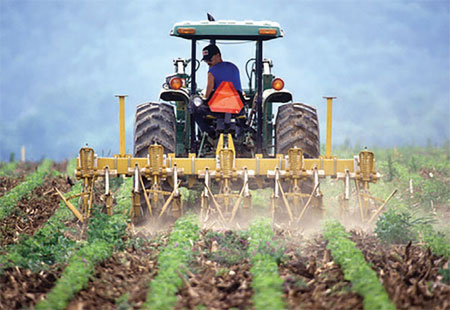By Brice Wallace
While exploring the idea of a Utah food innovation center to bring together farmers, ranchers, grocers and others in the industry, Utah’s lieutenant governor told industry representatives last week that connections between urban and rural Utahns also need to be strengthened.
Spencer Cox echoed several other speakers at the Utah Food Innovation Summit who said that people nowadays often forget where their food comes from.{mprestriction ids="1,3"}
Cox said that was certainly true when a state legislator from an urban area asked Cox why he should care about rural Utah. “I told him, ‘Look, I can’t think of any reason unless you care about your food, your water, your energy and your recreation,” Cox told the audience.
Those urban/rural connections are in jeopardy as the state’s population balloons. Always with a high birth rate and with increased in-migration, Utah is seeing growth that is putting pressure on transportation infrastructure, housing prices and air quality, Cox said.
“That pressure on ag is going to continue to grow,” he said. “We have to be able to connect in the minds of people of the Wasatch Front. It didn’t used to be like this. It used to be that almost everyone on the Wasatch Front either grew up in rural Utah, or the Wasatch Front was rural Utah for some of our older folks, or [they had] their grandparents or they had an aunt and uncle that they went and spent the summer on the farm with.
“That isn’t the case anymore. … It’s more and more common that people don’t understand the importance of ag — where food comes from.”
Another pressure point can be seen in water usage, he said. “There’s going to be a lot of pressure to say, ‘Wait, why are all these farmers using our water? Why is my lawn not green and yet I drive by these fields of crops?’ We’ve got to do a much better job of connecting those dots for people and letting them understand how this impacts them directly.”
Utah’s production agriculture had an economic impact of between $2.4 billion and $2.6 billion in 2014, Cox said. That includes farming, ranching, dairy operations and related support industries. It had a total economic impact of $3.5 billion, employed 26,000 people and paid $583 million in wages. And, speakers said, that is a small sliver of the overall food industry in the state.
What’s more, production agriculture has seen sales rise more than 85 percent during the recovery from the Great Recession, while the gross state product has risen 21 percent.
“Ag has been great, and things are happening out there and it’s very impressive,” said Cox, an alfalfa hay farmer. “But when you look at the food industry as a whole, this is just a very small subset of what’s possible out there.”
The Utah Farm Bureau is looking at what’s possible and has been exploring the idea of a Utah food innovation center. Such centers have cropped up across the U.S., usually at universities involved in public-private partnerships with industry to discover new ways to grow, package and use food products.
“The thing that we have to be careful about is, if we do not innovate, somebody else will,” John Ferry, a member of the Utah Farm Bureau Federation board of directors told the crowd. “I tell this all the time when I’m talking to farmers: Your competition is not the Brazilians or the Argentines or the European Union. It’s your neighbor. Because if you are not innovative and you are not doing your job, your neighbor will run your farm or run your ranch. So you have to be innovative.”
Ferry said the center could take many forms but should be focused on collaborations involving people throughout the industry. “Part of what we are proposing is a gathering, a clearinghouse, a table, if you will, where you can bring your ideas, your problems, your wonderments, to [the center] and we can listen to each other.”
Cox said innovation is needed because of changes in the way people buy things — preferring locally sourced food, for example — and technology allowing marketing methods that can reach people individually. People are willing to pay for experiences, with food tourism an option, and to experiment by mixing foods and ingredients in new ways.
The farm bureau has been discussing the idea of a food innovation center for a few months, said Dale Newton, chief executive officer of the Utah Farm Bureau Federation.
“We think this is a step that we can take forward to provide more markets for our producers, provide something of value to the state of Utah and really make something special here,” he said.
While several speakers highlighted innovations that have already occurred in other locations, “there ought to be a lot more Utah food innovation products,” Newton said. “That’s what we’re trying to do. We’re trying to excite ourselves, innovate, think of new ways, new things, to provide markets for our producers and markets for ourselves here in the state of Utah.”{/mprestriction}








